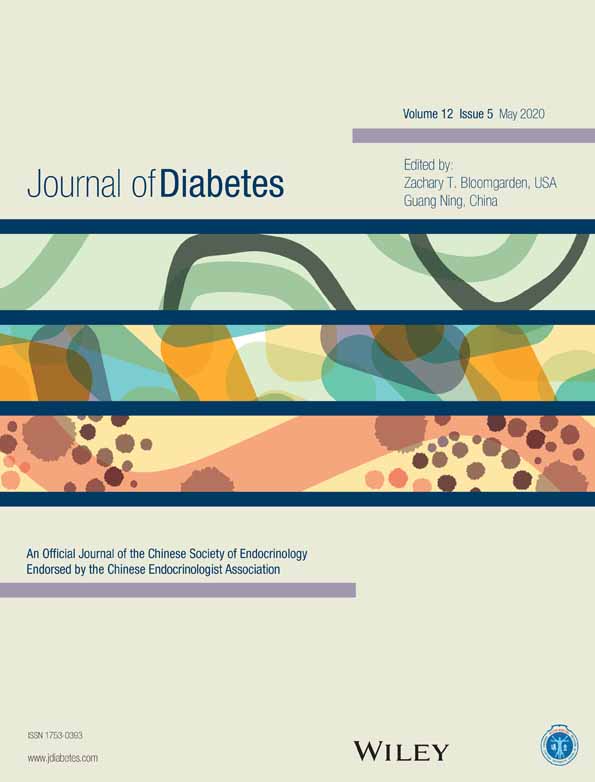Which person with diabetes should receive cardioprotective glucose-lowering medicines?
哪些糖尿病患者应该服用具有心血管保护作用的降糖药?
Four groups of major professional societies involved in recommendations for type 2 diabetes management have suggested that the sodium glucose cotransporter 2 inhibitors (SGLT2i) and the glucagon-like peptide 1 receptor agonists (GLP-1RA) are associated with cardiovascular (CV) outcome benefit and should be included in the glycemic treatment regimens of persons with type 2 diabetes having established atherosclerotic cardiovascular disease (ASCVD).1-4 A review of epidemiologic surveys of more than 4.5 million persons with type 2 diabetes from 2007 to 2017 showed that 32% had CVD.5 Similar prevalence findings have been reported recently. Among 148 803 patients with type 2 diabetes in the United Kingdom Clinical Practice Research Datalink seen in 2018, 52 601 had established ASCVD, of whom 6375 had heart failure (HF), an additional 2275 having HF without ASCVD.6 In the Scottish Care Information-Diabetes database of 248 400 persons with type 2 diabetes, 32% had diagnosed ASCVD. 15.4% of those whose age was less than 60, 30.1% of those age 60–69, 42.3% of those age 70–79, and 52.5% of those age 80 or more.7 Nearly one third of persons with type 2 diabetes, then, have ASCVD and would be considered candidates for the cardioprotective glucose-lowering medicines.
What about persons with type 2 diabetes who do not have ASCVD, but have CV risk factors? A new meta-analysis of seven CV outcome trials including 55 438 participants compared outcomes among 41 430 persons with type 2 diabetes having ASCVD and 14 008 without established CVD, treated with lixesenatide, liraglutide, parenteral semaglutide, exenatide once weekly, albiglutide, dulaglutide, and oral semaglutide.8 The likelihood of 3-point major adverse cardiac events (MACE) was 0.88-fold as great with GLP-1RA as that in the placebo groups, with consistent and significant reduction in risk of CV mortality, stroke, and HF hospitalization, and a nonsignificant but similar 0.91-fold reduction in myocardial infarction. There was no effect difference between patients with CV risk factors only and those with established CVD. The benefits of SGLT2i may be somewhat more limited, given the lower prevalences of HF and of macroalbuminuric chronic kidney disease than those of ASCVD, but in appropriately chosen patients these agents too are associated with benefit. With increasing recognition of their potential for benefit and with recognition of the very high likelihood of CV complications among persons with type 2 diabetes, we should strongly consider greater use of these agents.
四大主要参与2型糖尿病管理的专业学会建议,钠-葡萄糖共转运蛋白2抑制剂(SGLT2i)和胰高血糖素样肽-1受体激动剂(GLP-1RA)有益于心血管(CV)疾病患者的预后,应该纳入已确诊患有动脉粥样硬化性心血管疾病(ASCVD)的2型糖尿病患者的血糖治疗方案中。一项对2007-2017年450多万名2型糖尿病患者的流行病学调查报告显示,32%的糖尿病患者同时患有心血管疾病。最近也有类似的患病率调查报道,2018年英国临床实践研究数据链(United Kingdom Clinical Practice Research Datalink)显示,在148,803名2型糖尿病患者中,有52,601人患有ASCVD,而其中有6375人已患有心力衰竭(HF),另外还有2275人没有ASCVD却患有HF。苏格兰健康信息-糖尿病(Scottish Care Information-Diabetes)数据库显示,248,400名2型糖尿病患者中有32%的人已确诊患有ASCVD,而年龄在60岁以下, 60-69岁, 70-79 岁和80岁或以上, 患有ASCVD分别为15.4%,30.1%,42.3%和52.5%。。将近三分之一的2型糖尿病患者患有ASCVD,他们应该被考虑纳入使用具有心脏保护功能的降糖药物候选者中。
那么,没有确诊ASCVD但有心血管疾病危险因素的2型糖尿病患者该怎么办?一项包含55438名2型糖尿病患者的meta分析比较了41,430名确诊ASCVD和14,008名未确诊CVD的患者的7项心血管试验结局。这些患者服用利司那肽、利拉鲁肽、每周一次索马鲁肽(肠胃外服用)、艾塞那肽、阿必鲁肽、度拉糖肽或者口服索马鲁肽治疗。研究结果显示,使用GLP-1RA治疗的糖尿病患者发生3项主要不良心血管事件(MACE)的可能性是安慰剂组的0.88倍,他们的心血管疾病死亡率、中风和心力衰竭住院风险持续并显著低于安慰剂对照组,心肌梗死的风险也只有对照组的0.91倍,尽管没有统计学差异。此外,仅有心血管病危险因素的患者与已有心血管病患者的疗效无差异。考虑到HF和大量蛋白尿慢性肾病的患病率比ASCVD低,SGLT2i的益处可能更为有限,但在适当选择的患者中,这些药物也会带来益处。随着人们越来越多地认识到GLP-1RA药物的潜在益处,以及慢慢发现2型糖尿病患者心血管并发症的高风险,我们应该考虑大力推广这些药物的使用。




